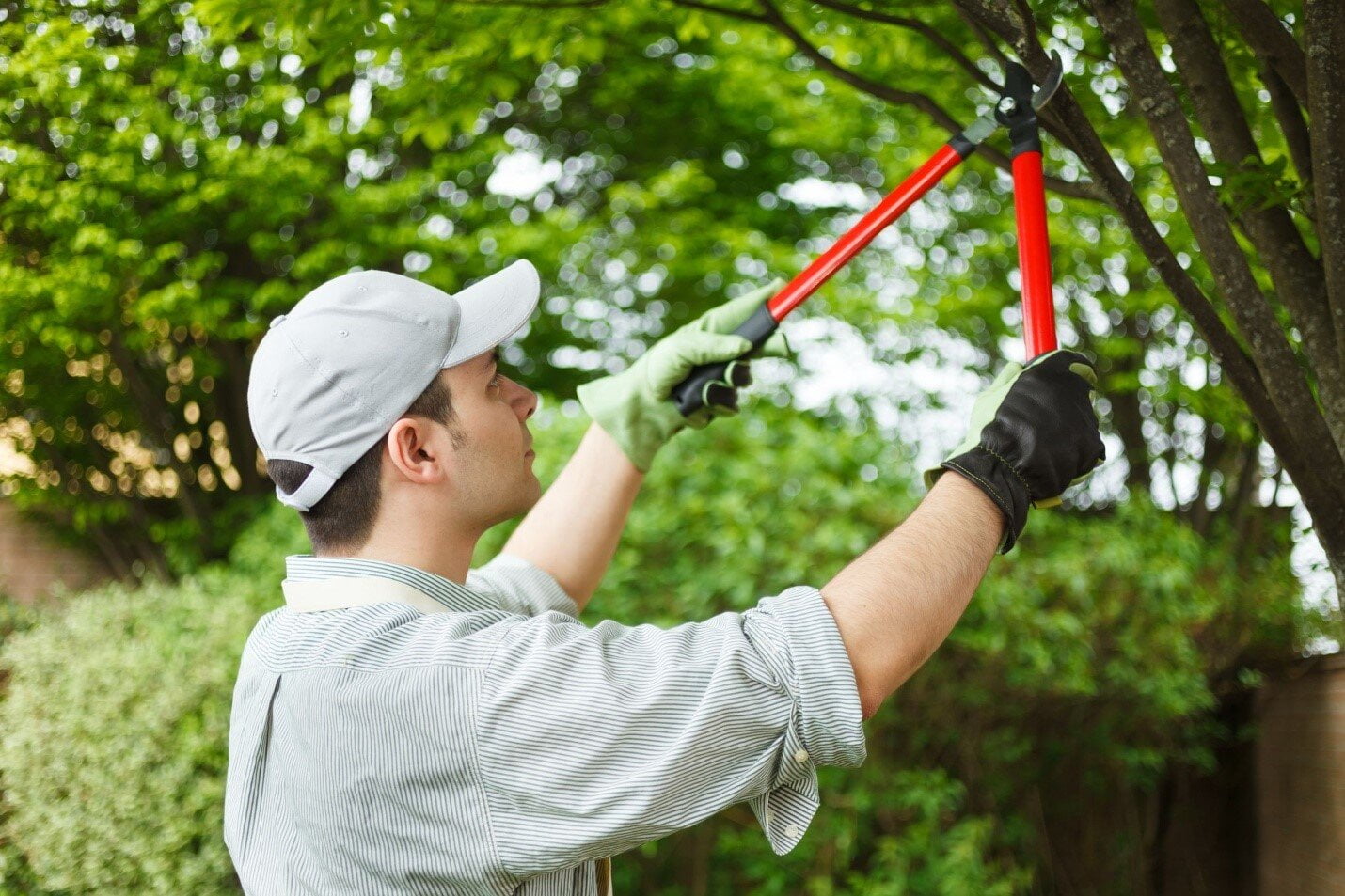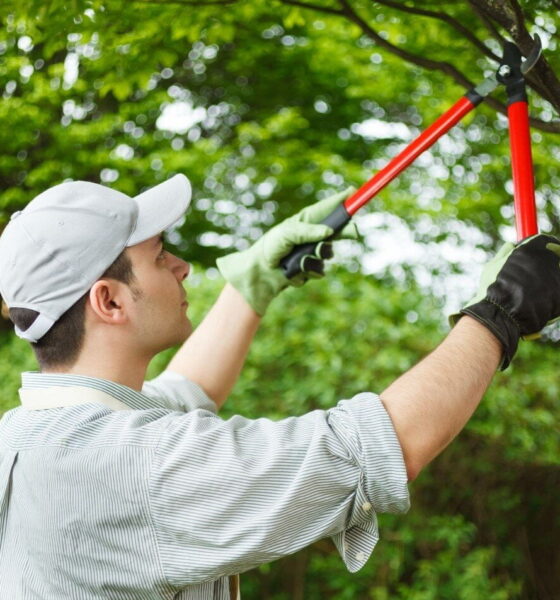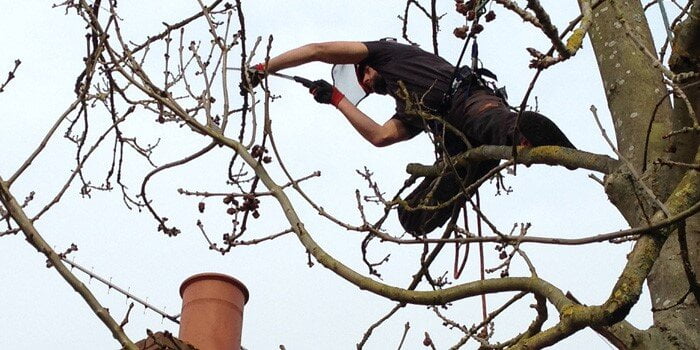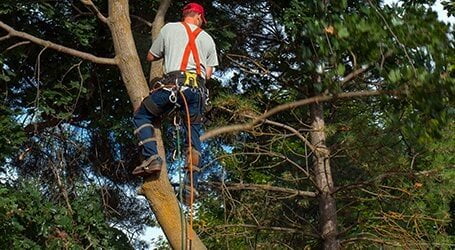

Environment
Tips and Techniques to Prune Trees to Maintain Aesthetic Appeal
Trees are a wonderful commodity that provides shade, oxygen, shelter to wildlife, act as a barrier for noise pollution, break down cold winds and add a majestic appeal to the environment. Trees not only make homes and communities beautiful but also improve the environment and can increase the value of the property. Trees are true assets that need proper care and need to be pruned in a timely manner to maximize the benefits.
What is tree pruning and why it should be done?
Tree pruning is a practice involving the selective removal of certain parts of the tree such as branches, buds or roots to improve the structural strength, maintain health, enhance aesthetic appeal, increase value and reduce risk from falling branches.

Pruning is advisable when:
- Tree branches are dead, dying or decayed as they are hazardous.
- Trees have crossing branches and weak branches.
- Lower branches block signs or are interfering with people and vehicles.
- Limbs have been broken by storms.
- Trees have grown too large and might damage the property.
However, trimming trees at the right time, in the right way and with proper tools is important as it lowers the risk of damage and hazards.
Who is qualified to prune trees?
Pruning trees is a dangerous as well as a difficult task and need proper tools and techniques to carry out the job in the best possible way. However, simple pruning such as cutting lower branches can be done by anyone, but only a certified arborist is apt to do the job well. This is because pruning requires proper knowledge on techniques, follow safety practices, and know the tree physiologies, as well as working experience with various sophisticated tools and tree species. So, arborists are the best people to carry out the work efficiently without causing any damage to the property as well as the trees.
Certified arborists also follow the national safety standards and truly care about the safety and health of the trees. Hiring professional arborist is also a cost-effective solution, as they have the resource and knowledge to not only successful prune the trees but also guide you for proper tree care.
General tree trimming tips
- It is always best to prune trees during a dormant season, but in case you find any dead, decaying or dangling branches prune immediately irrespective of the season.
- Be careful about the size of the branch that is to be removed. If it is less than 5cm in diameter, removing it is fine. If the branch diameter is in between 5-10cm, then it should be removed by a professional arborist.
- Branches that have weak, V-shaped and narrow angles only should be trimmed. Never remove the branches that have strong, u-shaped angles.
- Try pruning the branches when they are young as it is much easier to manage young branches and the risk of leaving nasty scars is lower.
- The branches should not be trimmed too close or too far away from the collar and never leave a large stub or remove the branch collar.
Types of pruning techniques
Proper pruning of trees is an art based on scientific principles of tree physiology and aid in improving the tree’s structure and health. The most common types of pruning are:
- Crown Thinning – It is a selective removal of branches to increase penetration of light and air movement throughout the crown of a tree. This is done to maintain or develop a tree’s structure and form. Crown thinning should be done by removal of branches from throughout the crown and leave a balanced density. No more than 30% of the foliage should be removed at a time, this is important to avoid unnecessary stress and prevent excessive production of epicormic sprouts.

- Crown Raising/Lifting – This is the removal of the branches from the bottom of the tree crown to provide clearance for vehicles, buildings, pedestrians, or to develop a clear stem for timber production. This should be achieved by removal of smaller branches so to minimize stress to the tree. The tree crown should not be lifted to 1/3rd of the overall tree height. On young trees, temporary branches should be retained along the stem to encourage tapering and protect trees from sunscald. These branches should be pruned annually to slow down the growth.

- Crown Reduction/Reshaping – This type of pruning is most often used when a tree has grown too large for its permitted space. The crown of the tree is made smaller by removing the foliage resulting in a more natural look and minimize stress on the tree and is also known as drop crotch pruning. A good reduction will leave the tree with a strong framework of large branches, which supports the smaller branches and twigs capable of producing dense foliage in the next season.
- Crown Clean – This is the removal of unwanted material from the crown of the tree and may include some crown thinning. It includes the removal of climbing plants, foreign objects (old tree houses, shopping trolleys etc) and parasitic plants from the vicinity and from the top of the trees.
- Pollarding – It is a regular form of pruning where certain tree species are pruned to Pollard heads in the dormant period. It is repeatedly pruned to the same point creating a pollard knuckle. The term is often used to describe a heavy reduction of a larger tree, which is then managed in the future as a pollard. This technique can work for only certain species of trees and your arborist should be able to advise you on this and explain the management regime that will be required afterwards.
These are the main techniques used to prune trees to maintain their aesthetic appeal. In addition to this, there are three basic types of pruning cuts.
- Reduction Cuts – This cut reduces the length of the branch or stem. The key is that the cut is made just beyond a live lateral branch that’s thinner than the stem to be cut.
- Removal Cuts – This cut removes a branch or stem entirely. The cut is made just outside the branch collar, the junction where the branch to be removed is attached to the main trunk or stem.
- Heading Cuts – This type of pruning cut is similar to a reduction cut but the cut is made anywhere on the branch or stem, regardless of the position of nearby lateral branches. This usually results in an unsightly, dead stump beyond the first lateral branch.
The above-mentioned tips and techniques will help you in taking proper care and maintain your trees to preserve their aesthetic appeal.


 Environment10 months ago
Environment10 months agoAre Polymer Banknotes: an Eco-Friendly Trend or a Groundswell?

 Environment11 months ago
Environment11 months agoEco-Friendly Home Improvements: Top 7 Upgrades for 2025

 Features8 months ago
Features8 months agoEco-Friendly Cryptocurrencies: Sustainable Investment Choices

 Features10 months ago
Features10 months agoEco-Friendly Crypto Traders Must Find the Right Exchange

















